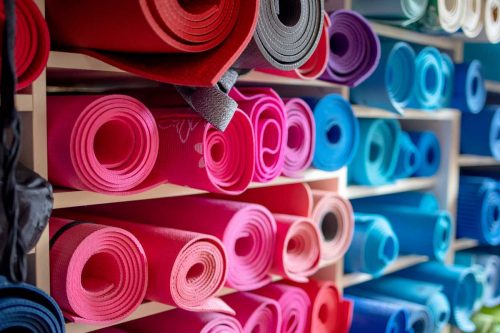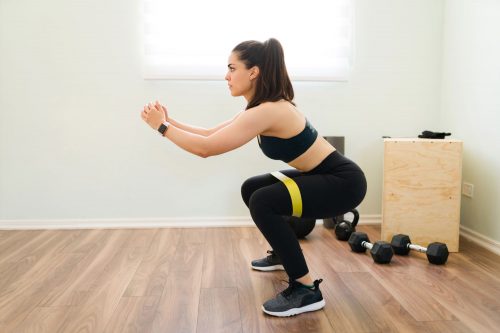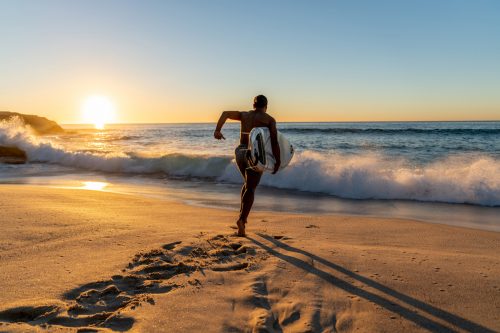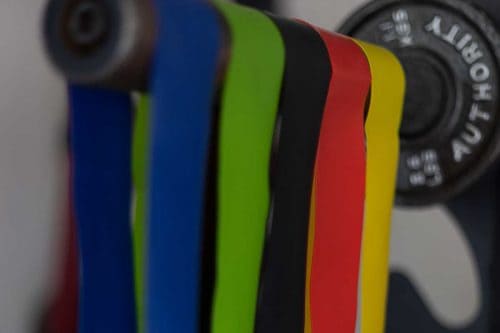If you're a surfer with kids of your own, you probably can't wait to introduce them to the thrill of riding the waves. If you're wondering how young you can start your kids out surfing, we've done the research for you. You may also be wondering how long you can keep surfing, and we've got you covered there, too.
Children as young as two can start surfing lessons, though it's more typical for children to start around age three to four. Knowing how to swim and being comfortable in the water are more important criteria for learning to surf than age. As for when you should quit, there is no set age. Many surfers continue to surf well into their 70s and even 80s.
Continue reading to find out more ways to help yourself or your favorite kid learn to surf. We'll also cover how to keep yourself in tip-top surfing shape so that you can continue to enjoy the sport for years to come.
![A surfer wearing a white shirt and Aloha pants riding the waves of a blue ocean, At What Age Can You Start Surfing? [And At What Age Should You Stop?]](https://fitseer.com/wp-content/uploads/2020/11/At-What-Age-Can-You-Start-Surfing-And-At-What-Age-Should-You-Stop.jpg)
Surfing Ages
Young children, ages 2 to 6, learn to surf best if it's presented as a game. A great way to start getting them comfortable in the water is to have them chase small, breaking waves onto the shore. They need to be able to deal with falling and going underwater without panicking before they start learning to surf.
Older children, teens, and young adults are the perfect age for learning to surf. Surfing requires balance and agility, but, as long as you start off moderately fit, you will develop that while surfing. You don't need an intensive training regimen to learn to surf, just a lot of patience and practice.
Older adults will need to be more cautious when learning to surf, as with all other physical activities. There's no age when you're too old to learn or too old to surf. However, if you start having joint problems that could be worsened by falling off a surfboard, you might want to quit surfing. Along the same lines, any health problems that interfere with your ability to balance could be dangerous while surfing.
Regardless of your age, it's important to take it slow and listen to your body. If you feel unsteady or like something is wrong, then it's not a good time to surf.
Is Surfing Dangerous For Beginners?
Surfing is actually a very safe sport for beginners who aren't likely to be taking the chances that more advanced surfers are. Even for advanced surfers, it's a fairly safe sport. Obviously, you need to know how to swim before attempting to surf. Beyond that, you should always have a spotter, someone who is watching the surfer in case of any problems. Start with simple skills and wait to move on until you've mastered those.
What Do You Need To Start Surfing?
To get started surfing you'll need the following:
A Surfboard
For beginners, a foam board is the best board to start with. Foam boards have the most volume of any surfboard, which means they will be more buoyant. You'll be able to stay up longer and learn more easily with a foam board. It's easier to paddle and get to waves with more buoyancy.
Foam boards are also safer for beginners. Accidents will undoubtedly happen, and foam is softer than fiberglass. As you advance in your skills, you'll move up to a fiberglass board. Starting with a foam board will actually help you gain the skills you need to use a fiberglass board quicker than if you had started with a fiberglass board.
Click here to see this foam surfboard on Amazon.
A Wetsuit
The wetsuit you choose will be based mainly on the temperature of the water you'll be surfing in. You need to know the neoprene thickness of the wetsuit to decide which is best for you. The neoprene thickness is given in millimeters and expressed as two numbers. The first refers to the thickness in the torso area and the second to the thickness in the arms and legs.
You'll need to know the average ocean temperature where you plan to surf. You can easily find this out through an internet search. Once you know the average ocean temperature, you can find the wetsuit thickness that is appropriate for that temperature. Most places that sell wetsuits also have a chart that correlates the thickness to the temperature.
There are several different types of wetsuits. If you'll be surfing in colder water, you may need a thick wetsuit, boots, gloves, and a hood. If you'll be surfing in warm water on your annual beach vacation, you may not even need to wear one.
Click here to check out wetsuits like this one on Amazon.
A Surfboard Leash And String Cord
You don't want to lose your brand new surfboard the first time you fall off it, so a surfboard leash is vital. It will keep your board from drifting away from you. You should buy a leash that is at least as long as your board or a little longer. You want your board to have room to move away from you when you wipe out. You don't want your board bouncing back on top of you.
You will also need a string cord to attach your leash to your board. The string cord attaches to your board, and the leash attaches to the cord. As a beginner, you'll want a thicker leash since you'll probably be putting more stress on it. Make sure to keep it clean after each use and check to make sure the velcro is adhering well before you take it out.
Click here to check out surfboard leashes on Amazon.
Surfing Wax
Wax helps you gain traction and improves your stability. When you first get a surfboard, you'll need to put a basecoat of wax on it. Follow the basecoat with a topcoat. The basecoat will last until it's removed. You should reapply a light topcoat every other time you surf.
Click here to check out surfing wax on Amazon.
Surfing, like any hobby, can be as expensive as you make it. As you progress, you may find other gear you want, but these essentials will get you started.
What Are Good Surfing Conditions For Beginners?

Surf reports tell the swell height, swell period, and swell direction. You don't need to be a mathematician to read these charts, but you do need to know what they mean and how to interpret them. The swell height tells the average height from the base of the wave to the top of the wave.
The swell period tells you the time from one peak to the next. The smaller the number, the faster the waves are coming in. The bigger the number, the more power the waves have, and the bigger they are. The swell direction tells which way the waves are coming from, with north being 0 degrees, east being 90 degrees, south being 180 degrees, and west being 270 degrees.
These charts measure waves offshore, so they won't correlate perfectly with wave conditions onshore. Good conditions for beginners are swell heights of two to three feet, a swell period of 8 to 10 seconds, and light winds. It's important to know the swell direction because if it is opposite of the direction the waves hit the shore, it will block the waves.
Read more: Is Surfing Considered An Extreme Sport?
Can You Teach Yourself To Surf?
You can teach yourself to surf as long as you have persistence and patience. Pick a safe beach with ankle to knee-high waves to start. Bring along a buddy for safety. Practice popping up on land to determine which leg naturally goes to the front. Attach your surfboard leash to your back leg.
Once you're in the water, practice paddling by positioning yourself on the board so that you aren't too far forward or too far back. To start, just walk out to waist-deep water. Turn and face the beach, keeping an eye out for waves coming in. When you see one that looks good, start paddling, and don't stop until the wave lifts you up. Don't try to pop up on the surfboard at first, just ride the wave in.
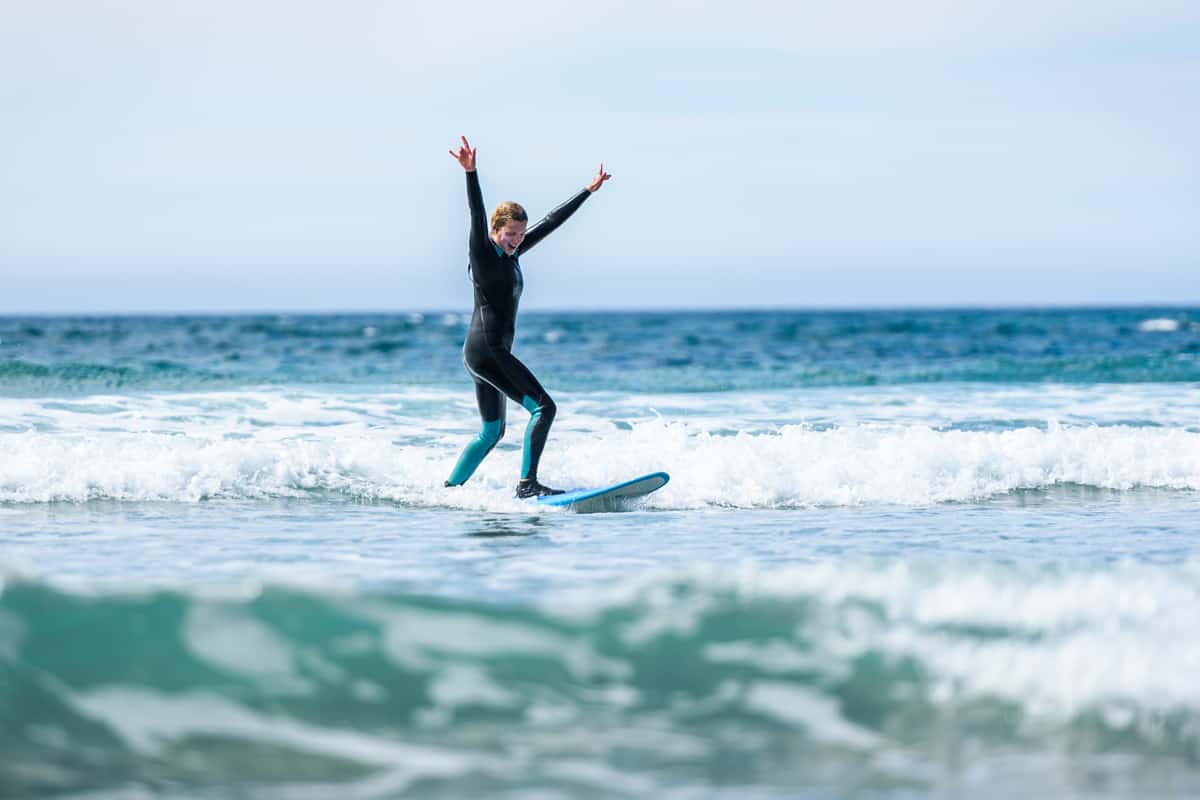
Practice catching the waves and riding them in until you can do it confidently. Once you've reached that stage, go back to land to practice popping up some more. You don't even need to use your board for this. Lie on your stomach and hop up to a lunge position, with your feet roughly shoulder-width apart.
After you're comfortable doing this on land, go back into the ocean. Combine the popping up with catching the wave by waiting until you paddle out and catch the wave. Place your hands on either side of the board and pop up. When the wave is pushing you in, release your hands, and stay crouched low. Look and point towards the beach.
Expect to fall off a lot before you master these steps. When you feel yourself starting to fall, try to jump off and land on your feet so you can avoid a belly flop or falling on your head. With enough practice, you'll soon be riding waves all the way to the shore.
Can You Teach Your Kids To Surf?

Teaching children to surf may be easier than learning yourself since children tend to pick up new skills quicker than adults. The most important thing to remember when teaching kids to surf is to keep it fun. Surfing can be scary, especially when falling off the board, which everyone will do at some point. It's better to end a lesson when it's fun and leave them wanting more than to drag it out until they're tired of it. You can always come back another day.
Is 60 Too Old To Learn To Surf?
You're never too old to learn to surf. As long as you're in good physical shape and a good swimmer, you should be able to learn to surf. Take it slow and listen to your body. If you feel any pain, back off and try again later. You can improve your skills by cross-training with an exercise regimen that will improve your balance, such as yoga or pilates.
Read more: Is Pilates Considered Strength/Resistance Training?
If you're an older beginner, you might benefit from lessons. You should talk to your doctor before you start learning to surf, just to make sure there are no contraindications. People of all ages with muscle weakness or who are prone to dizziness might have to quit surfing.
In Closing
Surfing is a great sport that can be enjoyed by people of all ages. By following a few simple safety measures and practicing a lot, you can learn a fun skill that will bring you years of enjoyment.



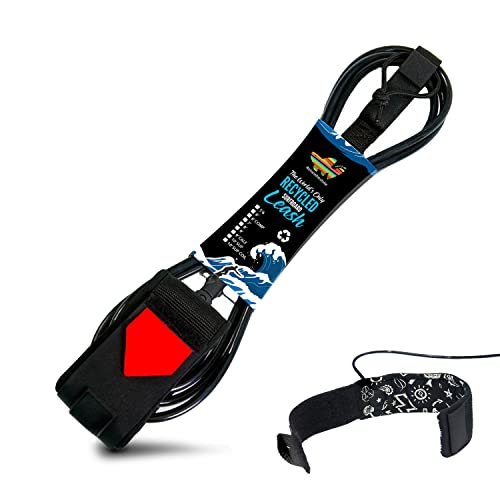

![Read more about the article Should I Polish My Bowling Ball? [And How To]](https://fitseer.com/wp-content/uploads/2022/04/rack-of-old-worn-bowling-balls.-500x333.jpg)

